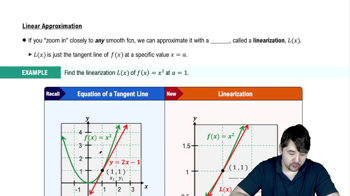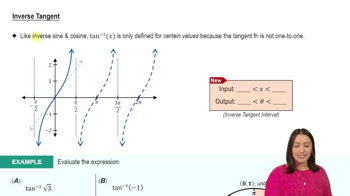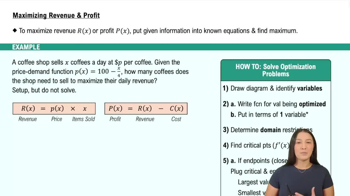Table of contents
- 0. Functions7h 52m
- Introduction to Functions16m
- Piecewise Functions10m
- Properties of Functions9m
- Common Functions1h 8m
- Transformations5m
- Combining Functions27m
- Exponent rules32m
- Exponential Functions28m
- Logarithmic Functions24m
- Properties of Logarithms34m
- Exponential & Logarithmic Equations35m
- Introduction to Trigonometric Functions38m
- Graphs of Trigonometric Functions44m
- Trigonometric Identities47m
- Inverse Trigonometric Functions48m
- 1. Limits and Continuity2h 2m
- 2. Intro to Derivatives1h 33m
- 3. Techniques of Differentiation3h 18m
- 4. Applications of Derivatives2h 38m
- 5. Graphical Applications of Derivatives6h 2m
- 6. Derivatives of Inverse, Exponential, & Logarithmic Functions2h 37m
- 7. Antiderivatives & Indefinite Integrals1h 26m
- 8. Definite Integrals4h 44m
- 9. Graphical Applications of Integrals2h 27m
- 10. Physics Applications of Integrals 2h 22m
5. Graphical Applications of Derivatives
Applied Optimization
Problem 4.R.37
Textbook Question
{Use of Tech } Minimizing sound intensity Two sound speakers are 100 m apart and one speaker is three times as loud as the other speaker. At what point on a line segment between the speakers is the sound intensity the weakest? (Hint: Sound intensity is directly proportional to the sound level and inversely proportional to the square of the distance from the sound source.)
 Verified step by step guidance
Verified step by step guidance1
Define the sound intensity formula: Sound intensity (I) is proportional to the sound level (L) and inversely proportional to the square of the distance (d) from the source. Mathematically, this can be expressed as I = k * (L / d^2), where k is a proportionality constant.
Let the sound level of the quieter speaker be L1 and the louder speaker be L2 = 3L1. Place the quieter speaker at position x = 0 and the louder speaker at x = 100 on a coordinate line.
Consider a point P at a distance x from the quieter speaker and (100 - x) from the louder speaker. The sound intensity at point P due to the quieter speaker is I1 = k * (L1 / x^2) and due to the louder speaker is I2 = k * (3L1 / (100 - x)^2).
The total sound intensity at point P is the sum of the intensities from both speakers: I_total = I1 + I2 = k * (L1 / x^2) + k * (3L1 / (100 - x)^2).
To find the point where the sound intensity is weakest, differentiate I_total with respect to x, set the derivative equal to zero, and solve for x. This will give the critical points, which can be tested to find the minimum intensity.
 Verified video answer for a similar problem:
Verified video answer for a similar problem:This video solution was recommended by our tutors as helpful for the problem above
Video duration:
11mPlay a video:
Was this helpful?
Key Concepts
Here are the essential concepts you must grasp in order to answer the question correctly.
Sound Intensity
Sound intensity refers to the power per unit area carried by a sound wave. It is typically measured in watts per square meter (W/m²) and is directly related to the loudness of the sound. In this context, sound intensity is crucial for determining how the loudness from each speaker affects the overall sound intensity at different points along the line segment between them.
Recommended video:

Linearization
Inverse Square Law
The inverse square law states that the intensity of a physical quantity (like sound) decreases with the square of the distance from the source. This means that if you double the distance from a sound source, the intensity becomes one-fourth. Understanding this principle is essential for calculating how the sound intensity from each speaker diminishes as you move away from it.
Recommended video:

Inverse Tangent
Proportional Relationships
Proportional relationships describe how two quantities change in relation to each other. In this problem, sound intensity is directly proportional to the sound level of the speakers and inversely proportional to the square of the distance from each speaker. Recognizing these relationships allows for the formulation of equations to find the point where the combined sound intensity is minimized.
Recommended video:

Derivatives Applied To Velocity

 1:13m
1:13mWatch next
Master Intro to Applied Optimization: Maximizing Area with a bite sized video explanation from Callie
Start learningRelated Videos
Related Practice









